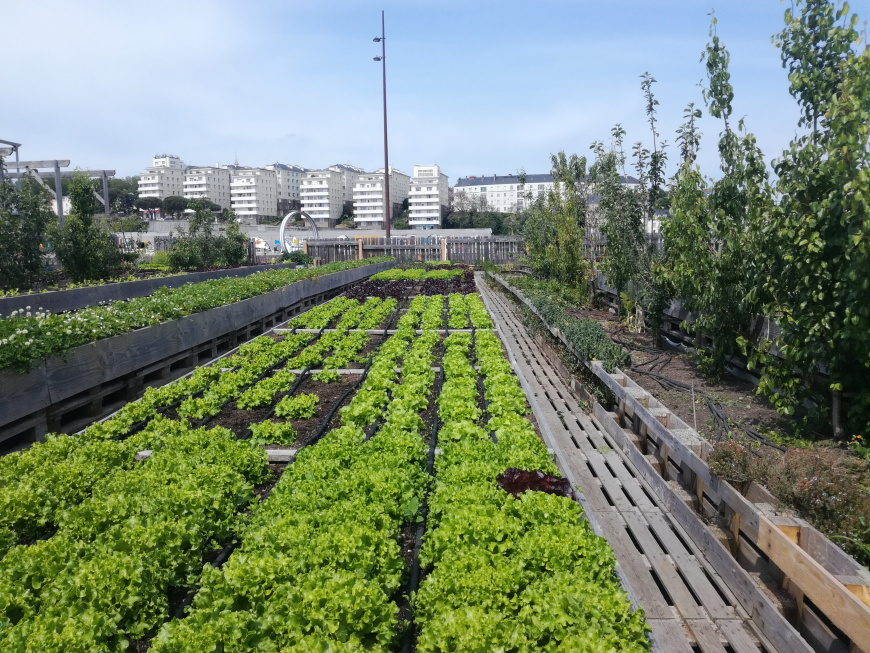A Biased View of City Blooming
Interested in growing food for sale in the City of Chicago? Below is a list of regularly asked inquiries pertaining to the regulations and policies that cultivators need to consider when planning a city agriculture task.
The zoning amendment does not modify any other codes dealing with composting, structure permits, buying or leasing City had property, service licenses or ecological contamination. There are existing codes that regulate these problems and they continue to be in complete impact and might be relevant to your project. Neighborhood gardens are normally owned or handled by public entities, civic organizations or community-based companies and maintained by volunteers.
Urban farms expand food that is intended to be offered, either on a not-for-profit or for-profit basis. Due to their industrial function, city ranches call for a business permit.
The Ultimate Guide To City Blooming
The quantity of garden compost product can not exceed 25 cubic backyards at any provided time according to the criteria in 7-28-715 of the City's Municipal Code. Since the dirt at the majority of new garden websites needs changing, compost, dirt, timber chips, or other products can be gotten to construct or boost the expanding area.

If a structure license is called for after that the hoophouse will be thought about an accessory structure. You can figure out more concerning the building authorization needs by speaking to the Division of Buildings. The 25,000-square-foot dimension limit is intended to avoid a single area yard from controling a provided block or diminishing the block's existing household or industrial character.
The limit does not apply to yards located in Public Open Area (POS) areas. Can there be more than one area garden that is 25,000 square feet on a single block? Fencing is not required, nonetheless, gardens that have large parking locations might be needed to install fence or various other landscaping features.
Unknown Facts About City Blooming
B1 & B2 areas require that all commercial use activities be performed inside your home. R districts restrict commercial task. The guidelines reflect the objective and intent of the Zoning Code. Is fence needed for urban ranches? Yes. Fencings may be called for, in addition to landscape design and testing, for sure car parking locations and exterior work or storage space locations relying on area and the certain task happening.
Urban farms call for structure licenses and zoning authorizations prior to building and construction (landscaping). Various other kinds of city evaluation might be called for depending on details frameworks, useful link activities, size, landscaping, licensing, public health and stormwater management problems.
Yes. The kind of certificate is identified by what is happening at the site. The Department of Business Matters and Consumer Protection can aid establish the particular kind of organization permit that's called for. Yes. Off street car parking is required for many commercial tasks in Chicago. The needed number of garage is based upon the number of employees working on site and not the square footage of the expanding room.
The Facts About City Blooming Revealed

An urban ranch can market garden compost material produced on site, however, the operation needs to abide with the regulations in 7-28-715 of the Chicago Municipal Code. Aquaponic systems are allowed indoors on city ranches in numerous zoning districts.
As much as 5 hives or nests of honey bees may be kept as an accessory use. Nevertheless, beekeepers need to sign up with the Illinois Department of Agriculture. For even more details concerning the recommended zoning modification you might contact the Division of Real Estate and Economic Advancement, Bureau of Planning and Zoning at 312.744.8563.
, which takes place in country areas at the side of suburban areas.
More About City Blooming
It can include an activity of natural cultivators, "foodies" and "locavores", that seek to create social media networks established on a common principles of nature and area holism. These networks can establish by means of official institutional support, becoming incorporated into neighborhood town as a "shift community" movement for sustainable urban advancement.
Some of the first evidence of city farming comes from Mesopotamia.
Comments on “City Blooming for Dummies”